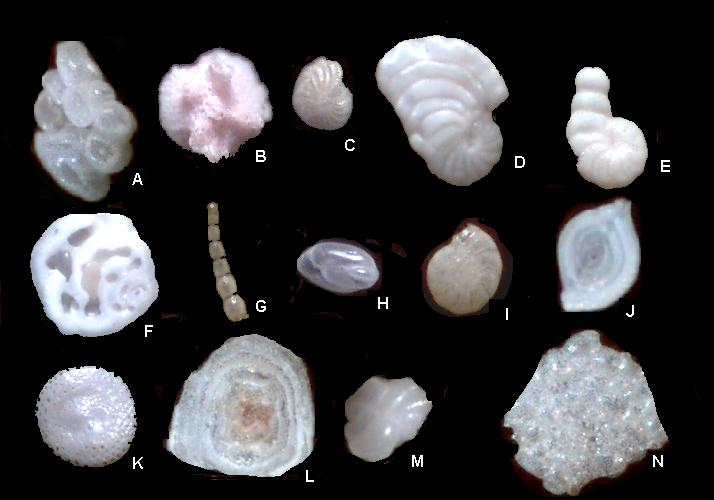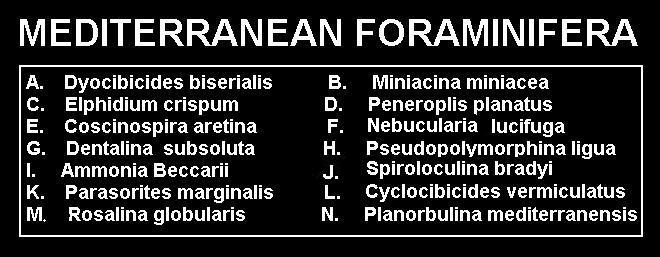The Fluid Rocking of a Suspension of Foraminifera as a means of Concentrating Samples for the Preparation of Strews. Brian Darnton (G.B.)
INTRODUCTION
Forams can be collected in a variety of ways from beaches and from living seaweed in the sub-littoral zone.
DECANTING TESTS FROM AN AGITATED SUSPENSION
(THE EARLAND METHOD)
Sorting the foram tests from the sand can be like finding a needle in haystack but the little (calcite) tests are slightly lighter than the (silicious) sand. When the sample is shaken up vigorously in a bottle of water in a bright light, one can see that after about one second, most of the brownish sand will have settled on the bottom. At that point the suspension of white tests is poured off swiftly into a 50 micron sieve. One can then gather the sample and wash it free from salt under the tap. The disadvantage of the method is that other light shelly remains of calcite may also be collected.
DRY ROCKING
This is a well established method for obtaining the larger species. When dried out and placed in a dish, Horizontal shaking will cause the Foraminifera to work their way to the surface where they can be picked out manually using the point of a fine art brush. The careful use of sieves can help in the sorting out of types. Sieves from 50 microns to 700 microns in steps of 50 microns are a useful range to have for this work. In the past heavy but fairly inert chemicals like carbon tetrachloride have been used to float off the tests, but these volatile toxic substances can affect the earth’s environment and are no longer generally available for the amateur.
FLUID ROCKING
This method copies the natural deposition of tests on the strand line. If the sample of damp sand and forams is poured into a developing dish and only partly covered with water and gently but slowly rocked from end to end, numbers of tests will float and can be decanted into a 50 micron sieve. This rather curious floatation seems to happen because water is strongly cohesive so when the shells are elevated above the level of the fluid, water is drawn from them and replaced by air. As the rocking is reversed they are able to float off and are buoyant for long enough, to be decanted.
The only requirement is to regularly replace the water and to ensure that during the rocking process the shells emerge from the water. In nature this is exactly how the strand line of forams advances up the beach with the tide. The return of each wave draws water from the tests leaving many filled with air but the next wave floats them off and deposits them further up the beach. Material from the Mediterranean and our Atlantic coasts is very responsive to this treatment but of course fossil material filled with heavy particles of pyrite or silica will not rise on the water.
TROUBLESHOOTING
The whole sample must be dampened before rocking or any dry particles of sand may also float on the surface tension. The system only works when small quantities of water are used. When each end of the dish is elevated in turn by rocking, that part of the sample must be high and dry.
CLEANING
When the sample is pure enough, tap water can be used to remove residual salt. Some of the tests may be soiled by algae, and these may benefit by immersion in fresh hydrogen peroxide for several days to blanch them. The QX3 computer microscope was used to take the following pictures individually.

Comments to the author Brian Darnton are welcomed.
Visit Brian's home pages at http//www.darnton.freeserve.co.uk where a variety of information and images, including on marine life like foraminifera, are presented.
A more extensive article 'Some notes on the Collection and Mounting of Foraminifera' is also available on the author's web site (a handout at the recent QMC 2000 Exhibition).Two introductory Micscape articles on forams by the author are below, also check the Micscape Library search page by typing the author's name in as a keyword.
Finding the chalk makers
Collecting and mounting foraminifera
